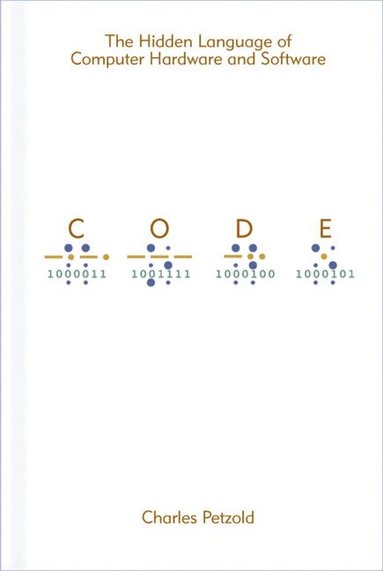
- Format
- Häftad (Paperback)
- Språk
- Engelska
- Antal sidor
- 400
- Utgivningsdatum
- 2000-12-01
- Upplaga
- 2nd ed
- Förlag
- MICROSOFT PRESS
- Illustratör/Fotograf
- portraits facsimiles
- Illustrationer
- facsims., ports.
- Dimensioner
- 228 x 153 x 28 mm
- Vikt
- Antal komponenter
- 1
- Komponenter
- ,
- ISBN
- 9780735611313
- 640 g
Code: The Hidden Language of Computer Hardware and Software
Slutsåld
Kundrecensioner
Fler böcker av Charles Petzold
-
The Annotated Turing: A Guided Tour Through Alan Turing's Historic Paper On Computablilty And The Turing Machine
Charles Petzold
Programming Legend Charles Petzold unlocks the secrets of the extraordinary and prescient 1936 paper by Alan M. Turing Mathematician Alan Turing invented an imaginary computer known as the Turing Machine; in an age before computers, he explored th...
-
Code
Charles Petzold
The classic guide to how computers work, updated with new chapters and interactive graphics "For me, Code was a revelation. It was the first book about programming that spoke to me. It started with a story, and it built up, layer by layer, analogy...
Övrig information
<p>Charles Petzold wrote the classic Programming Windows(R), which is currently in its fifth edition and one of the best-known and widely used programming books of all time. He was honored in 1994 with the Windows Pioneer Award, presented by Microsoft(R) founder Bill Gates and Windows Magazine. He has been programming with Windows since first obtaining a beta Windows 1.0 SDK in the spring of 1985, and he wrote the very first magazine article on Windows programming in 1986. Charles is an MVP for Client Application Development and the author of several other books including Code: The Hidden Language of Computer Hardware and Software.
Innehållsförteckning
Du kanske gillar
-
Clean Code
Robert Martin
Häftad -
The Tech Coup
Marietje Schaake
Inbunden -
Careless People
Sarah Wynn-Williams
Inbunden
